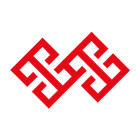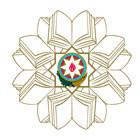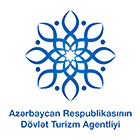Traditional art and symbolism of Kelaghayi, making and wearing women’s silk headscarves
Thin, almost weightless and with colors able to compete even with the rainbow, Azerbaijani silk scarves – kalagayis - have almost a 1,500-year history.
Historians believe that people in Azerbaijan learnt to get silk from silkworm cocoons imported from China no later than the 7th century. Manufacture of raw materials and products from silk, Barda, Ganja, Shamakhi, Sheki, Nakhchivan, Ordubad and Karabakh quickly joined trade operations on the Great Silk Road and soon began to actively compete with the traditional suppliers from China on the markets of Western Europe.
Kelaghayis - female headscarves 50x50 cm in size - enjoyed particular popularity among buyers. White, blue and red kelaghayis were decorated with ornamental and complex geometric patterns on the edge and often included an image of the Azerbaijani “buta” – a symbol of fire, eternity and life. Each drawing contained a coded message, the meaning of which was often understood only by masters.
Kelaghayis were worn by all Azerbaijani women - bright ones by the young and dark ones by the old. Usually they were placed on top of the headdress or wrapped around the head as a turban. A red kelaghayi was part of the bride’s dress while the groom was decorated with a kalagayi of different colors. The kelaghayi was hung on the gate as a sign of an upcoming wedding or given as a gift for good news or for a job that was well done. Today kelaghayis are produced in several regions of Azerbaijan, but scarves from Sheki and the village of Basgal are particularly famous.
In November 2014, Traditional art and symbolism of Kelaghayi, making and wearing women’s silk headscarves was inscribed on the UNESCO Representative List of the Intangible Cultural Heritage of Humanity.
















